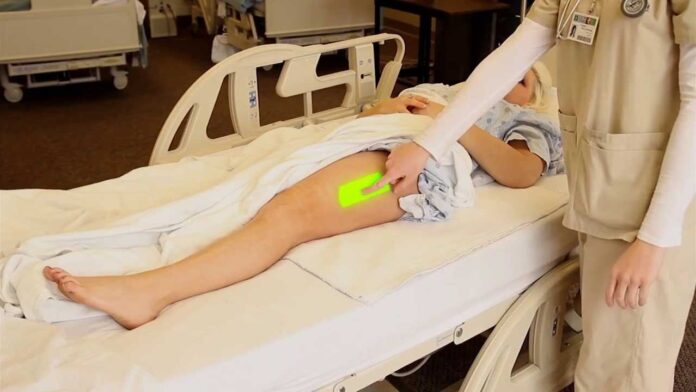Overview
It has become known among people at the present time that the Coronavirus vaccine is given intramuscular in the muscle of the arm.
However, what many of us do not know is that there is another place in the body where the vaccine can be taken has been approved, which is the thigh muscle.
While giving the vaccine in the thigh is rare, there are some people who may want to receive it there. If you think it would be better for you to get the COVID-19 vaccine in your thigh rather than your arm, it is best to discuss this with your doctor first.
Who are the People who Should be Given the Coronavirus Vaccine in Thigh Muscle?
There are some groups that it is advisable to receive the vaccine in the thigh muscle and not the arm, and they are:
- People with a history or risk of developing lymphedema in both arms.
- People with or a history of breast cancer or currently suffering from it.
- Women who need a mammogram within 6 weeks of receiving the Coronavirus vaccine.
What is the Relationship Between Coronavirus Vaccine and Lymphedema?
Lymphedema is a chronic and painful condition that causes swelling in parts of the body. This condition can occur in patients who need surgery to remove lymph nodes from the arm. Removing the lymph nodes disrupts the flow of lymph fluid, causing the fluid to return, and the breast or arm enlarges on the affected side.
Some of the participants in the clinical trials of the Pfizer-Biontech and Moderna vaccine experienced swollen lymph nodes in the armpit or neck area 2-4 days after vaccination on the same side where the injection was given in the arm.
This side effect is normal, short term, and means that the body is responding to the vaccine. In the Moderna vaccine, the average duration of swelling was from one to two days, and lasted an average of 10 days in those receiving the Pfizer-Biontech vaccine.
If someone has lymphedema in both arms, or if he is at risk of developing lymphedema in both arms, some medical institutions recommend giving the Coronavirus vaccine to these patients in the thigh as a preventive measure for fear that the vaccine could cause swelling of the arms in people with edema Or, it may create worrisome symptoms that aren’t present in those at risk of developing lymphedema.
The immune response may also be less efficient if the injection was given in an arm without lymph nodes or an arm with poor lymph drainage.
Sherrill Brownell, associate director of the Lymphedema Research Program at Massachusetts General Hospital in Boston, says patients whose lymph nodes have been removed from one arm may get the vaccine in the healthy arm instead of the thigh.
What is the Relationship Between the Coronavirus Vaccine and Breast Cancer?
Swollen lymph nodes in the armpit can be a sign of breast cancer, so if someone with a history of breast cancer does not know that Pfizer or Moderna vaccines can cause lymph nodes to swell, the person may think cancer has returned.
What is the Relationship Between the Coronavirus Vaccine and the Mammogram?
Coronavirus vaccines can cause swollen lymph nodes in the armpit or near the collar bone, which will appear as white spots on a mammogram and is likely to be interpreted as cancer.
society of breast imaging recommends trying to schedule a routine mammogram before the first Coronavirus vaccine dose or at least one month after the second vaccine dose, but the alternative plan is to get the vaccine in the thigh instead.
If you booked the mammogram appointment, and you prefer to have the vaccine in your arm, you can reserve the appointment and call the mammography center ahead of time to let them know when the vaccination is due.
If you got the Coronavirus vaccine in your arm in the past six weeks, your radiologist will expect to see a swollen lymph node on the same side that you received the vaccine, and this will be a normal result unless the swelling continues for more than 6 weeks.
Can These Three Groups Receive the Vaccine in the Arm?
Experts say that there is no need to worry if a person has already been vaccinated on the side where they had breast cancer, or if they are vaccinated in the arm that has fewer lymph nodes; The important thing is to get the vaccine.
To learn more, current and former breast cancer patients will be surveyed about the side effects of the vaccine in order to better understand how many patients report enlarged lymph nodes, as well as when and how symptoms appear.
Why is the vaccine usually given in the arm?
Coronavirus vaccine has been developed so that it is injected into the muscles, and the muscles of the arm are suitable for injection and it is believed that it is less painful than some other areas of the body. But the vaccine can be injected into other muscles, provided they are near the lymph nodes in the body.
Lymph nodes are critical for generating immune responses. When the vaccine enters the arm or thigh muscle, it travels to the nearby lymph node. There, the vaccine is taken by special cells that inform white blood cells, known as T-cells and B-cells, to either become killer cells (search for and destroy corona virus-infected cells) or cells that secrete antibodies.
The upper part of the thigh is also located near several lymph nodes, and it has already been shown to elicit an effective immune response after vaccination.
For decades, other vaccines were being injected into the buttocks. However, scientists have now realized that the layers of fat cells in the buttocks are too many to allow easy access to muscles and lymph, rendering the immune response ineffective. Additionally, the buttock vaccination is generally not done to avoid injury to the sciatic nerve.

